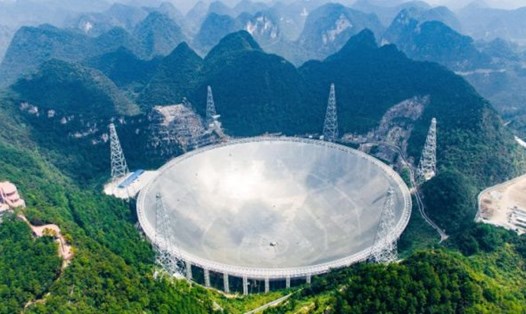Geminids are one of the two biggest ice rains of the year - along with Perseids in August. To have detailed information about the ideal time and location to observe this ice cold, Lao Dong Newspaper reporters had an interview with Mr. Dang Vu Tuan Son - Chairman of the Vietnam Young Astronomical Society.
Sir, the lover of astronomy is very excited to welcome the biggest cyclone of the year. So what is the ideal day to observe the ice storm Geminids in 2020, sir?
- In 2020, the peak of the ice age of Geminids fell on a moonless night. When there is no moonlight that causes obstruction, observation will be very favorable for places with rainless and almost cloudless weather conditions. The best time to observe this ice storm is the night of the 13th and the morning of the 14th of December.
Of course, people may have actually observed it with fewer ice stars the night before or after. Even since the first nights of December, we have been lucky enough to see some ice stars of Geminids.

So is there a need for a support tool to observe more clearly the ice and rain? Can you suggest the most ideal location to observe this ice star rain?
- To observe ice and rain, people do not need any support tools because observing with the naked eye is the best. Choose an observation location with a wide view, with little artificial light, absolutely do not observe where there is light shining directly into the eyes).
At first, we will need about 10 minutes to get used to the darkness. So be patient, it may not be that viewers will initially see any stars, but a few minutes later they will gradually appear.
The best observation position is to lean your back so that your eyes always look up. People monitoring ice and rain should not forget to protect their health and pay attention to security issues if the viewing area is not your home. Under good observation conditions, this year's Geminids could show over 50 icebergs per hour at peak night. In places with the most ideal conditions, the number of ice cubes per hour can even reach 100 or more.
What are the most noteworthy points when observing the ice storm Geminids, sir?
- To observe this ice storm, viewers need to determine its central area. That is Gemini (most Vietnamese documents translate Song Tu), or more precisely, the area near Castor - the second brightest star of this star cluster. On these December nights, you can see Gemini rising from around 8pm in the East and rising very high in the middle of the night before gradually moving towards the Western horizon.
That means ice rain could be seen all night. However, the ideal time is still after midnight. If it were not polluted by smoke, dust and light as well as cloudy skies, people would easily find the location of this Gemini star cluster through its two brightest stars, Pollux and Castor.
In addition, special attention should be paid to the weather. If it is cloudy or rainy, we will not have the opportunity to observe any ice cubes. To put it simply, if you can't see the brightest stars as I've described, it would mean there won't be ice because the atmosphere where you live is too polluted or the sky is too cloudy.









